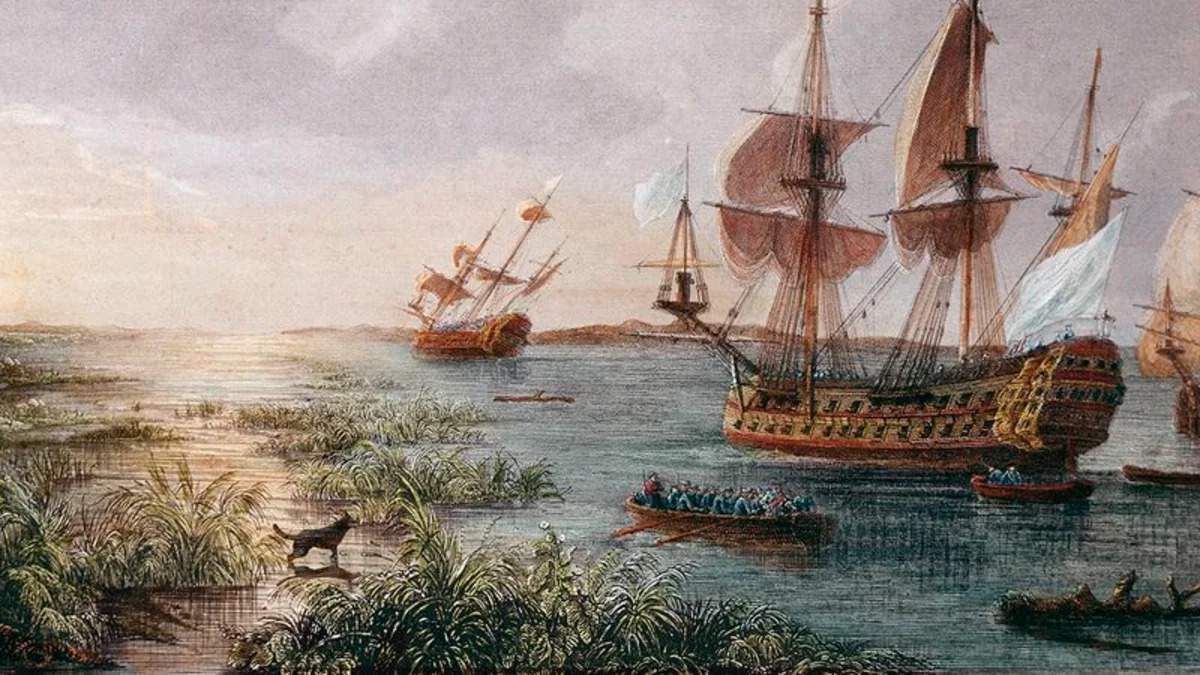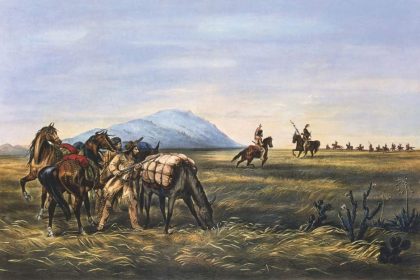How did Christopher Columbus discover America and change the world? Christopher Columbus transported the Europeans to the “New World” and died without understanding that the lands he discovered were not the coastlines he was seeking for. He lived only 55 years before dying in Spain, having been largely exhausted throughout his life. This brings us to the moment of the discovery of the “New World” by Columbus in 1492, which afterwards was renamed “America.”
Christopher Columbus and the discovery of America
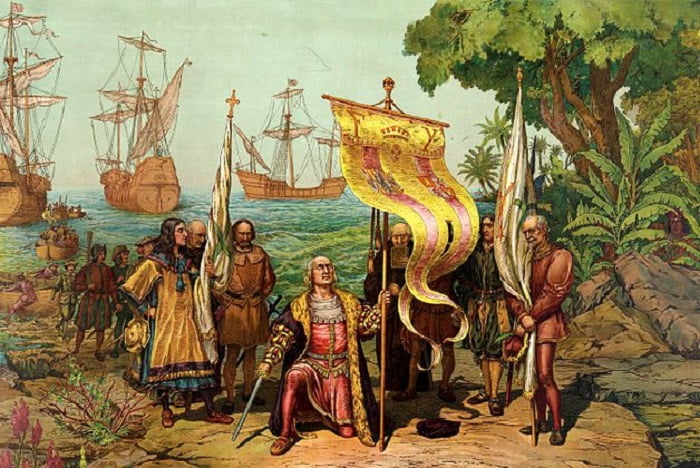
When Columbus returned to Europe in 1493, the news he brought caused tension between Portugal and Spain. Until that time, Portugal had been leading the opening of new trade routes to Africa. In 1481, the Papacy officially declared that all lands in the south of the Canary Islands belonged to Portugal, which meant a new source of income for the office of Pope.
But now Spain was opposed to the north-south divide. Fernando and Isabel claimed that they had rights to all discoveries in the west and consulted with Pope Alexander VI for justice. In 1493, the Pope decided to draw a perpendicular line 370 miles west of the Azores; the lands to the east of it belonged to Portugal and those to the west to Spain.
Portuguese King Joao opposed this decision because it cut off the favorable winds that carried the ships to the south. In 1494, the two ambassadors met at Tordesillas to solve the problem. The line would be shifted approximately 1,000 miles west so that their ships could go south and east without violating Spanish rights.
What no one knew at that time was that the line cut the east coast of South America. A Portuguese sailor, Pedro Alvares Cabral, on his way to India in 1500, encountered a large piece of land east of the line and registered it on behalf of his country. For this reason, the lands we know today as Brazil belonged to Portugal.
How the discovery of America affected the New World
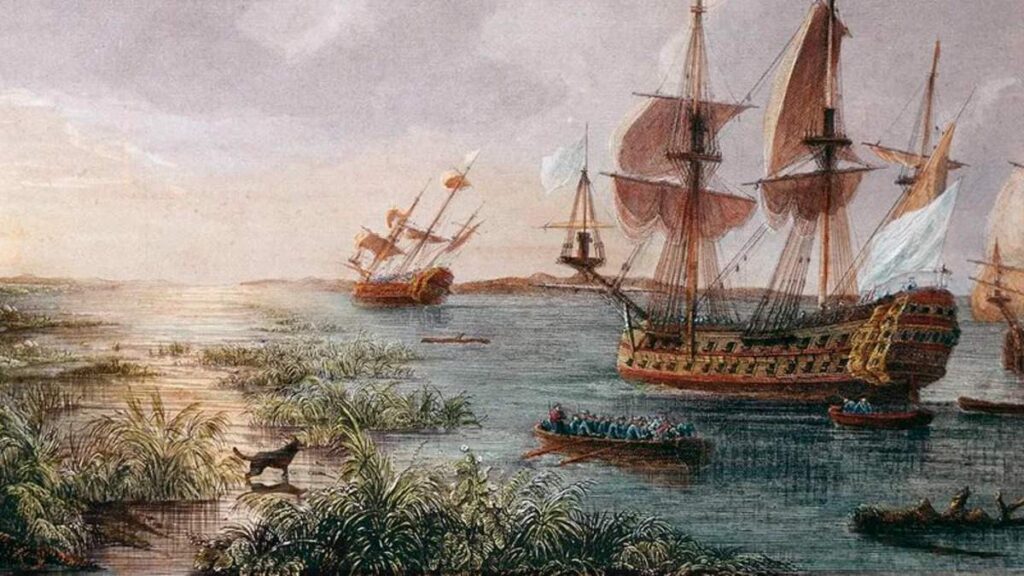
Until the beginning of the 15th century, Europe’s only relationship with Africa and the East was through the land, and it was a difficult and slow-moving relationship. However, after Christopher Columbus’ journeys, the seas meant new possibilities for connection, not obstacles.
This development had disastrous consequences for the peoples of America, the first continent to fully experience the influence of Europeans. Until that day, many cultures had risen, fought, and collapsed in South and Central America. Some societies, such as the Aztecs and Incas, created great empires. Others, such as Peru’s Mochica and the Maya of Central America, created the finest examples of art that would be called the “pre-Columbian era.”
With the arrival of the Europeans, these cultures were doomed to die. Europeans were supported by ships, weapons, and horses and proved to be invincible. On the other hand, the destructive effects of diseases to which Americans were not resistant brought death to the majority of the local people in the 100 years following the arrival of foreigners. All local cultures disappeared, from Mexico to Peru in the south and the Amazon in the east. Tons of handmade objects, especially golden ones, were stolen.
Despite that, the shadow of pre-Columbian culture continued to exist. Blended with European influence in architecture, the visual arts, religion, language, and technology, these cultures became even more complicated with the arrival of African slaves, who introduced a completely different culture.
The effects of the discovery of America on Europe
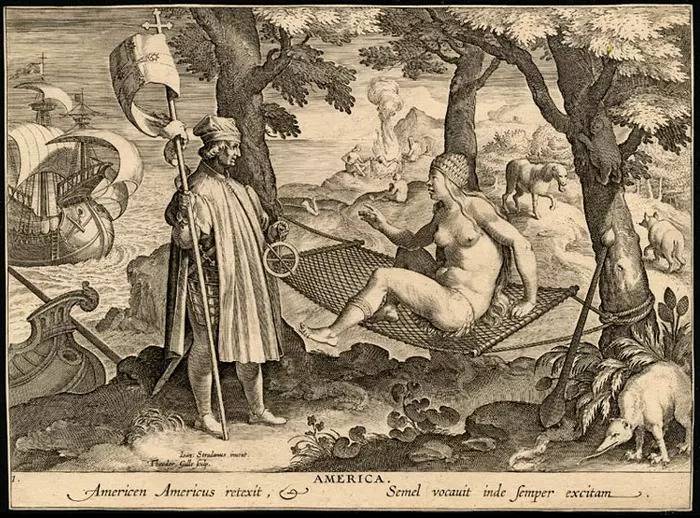
The discovery of America’s first impact on Europe was the precious metal mining influx. In the 50 years after the discovery of America, Spain seized around 180 tons of gold, largely artistic pieces, and practically melted all of it. This plunder is considered one of the greatest wealth transfers and art thefts of all time. Meanwhile, the Spaniards extracted 16,000 tons of silver from the mines and sent it to their home country.
This action deprived the world of this unique artistic heritage forever, leading to controversial wastefulness in Europe. The transferred wealth was mostly spent on war, which caused prices to rise to excessive levels. On the other hand, the relationship with America had another surprising consequence. Many unknown plants were growing in Europe on the hills of the high Andes Mountains; potatoes, tomatoes, and corn were completely new tastes for the Old World. Tobacco was also unknown until the Spaniards saw the Indians smoking it for medical purposes and religious ceremonies.
Over the centuries, thousands of medicines have been produced with the resources gathered from South America. For example, a curative plant—a poison that affected the nerves—used by the Amazon’s indigenous arrows was used as a muscle relaxant during surgeries.
Who followed Colombus?
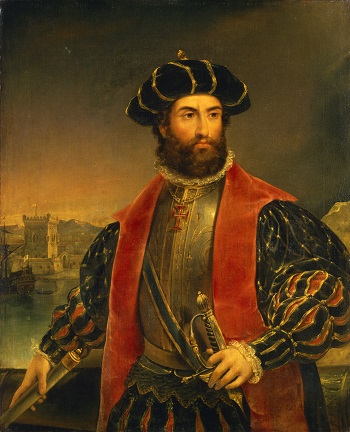
While Spain was trying to provide capital through the achievements of Christopher Columbus, Portugal continued to travel to the south and east. In 1497, Vasco da Gama toured the Cape of Good Hope, discovered the coasts of East Africa, and then set out for India, intending to break the Arab monopoly in Indian trade. This was also an unfortunate journey, as he could not sell anything, and the scurvy outbreak turned his three-month return journey into hell. However, this road proved to be usable. In the next decade, Portugal would use da Gama’s success as a step both to improve its trade with India and to move toward the Spice Islands (Moluccas) in Southeast Asia. In 1509, a trade fleet arrived in Malaysia. From 1520 on, Portugal dominated the Southeast Asian trade.
The Great Ocean was the last thing that needed to be completed. It was believed that America was a large piece of territory, and another ocean behind this continent was located in 1513 when Vasco Nunez de Balboa crossed the Panama Canal and set foot on the beaches of the Great Ocean. The first round-the-world voyage took place between 1519 and 1522, and thus the southern tip of the continent was fully discovered.
Who coined the name “America”?
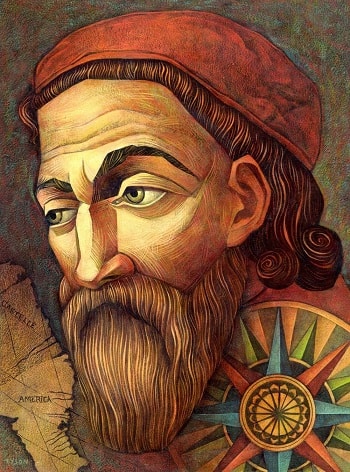
The continent was named “America” after the explorer Amerigo Vespucci, who descended from the east coast of South America to Patagonia between 1501 and 1502. Vespucci realized that this place could not be the Far East and concluded that this land had to be between Europe and China, whether it ended with a nose or reached the South Pole. Therefore, in 1504, he wrote that it would be more appropriate to call it the “New World.” German cartographer Martin Waldseemüller gave these lands the name of Vespucci, on an atlas he made in 1507. Amerigo Vespucci calculated the circumference of the Earth as only a minus 50 miles from its actual length. So, Waldseemüller named the continent after Vespucci.
Vikings discovered America before Christopher Columbus
In fact, Columbus had not “discovered” America. Millions of native Americans had been living there for tens of thousands of years. Columbus wasn’t the first visitor to reach the continent, either. Recent discoveries in Newfoundland point to a residential area where the Vikings seemed to lived for more than a generation. According to Icelandic epics, Bjarni Herjolfsson, a Greenland Viking, had gone off course on his ship in the 1000s when the winds of the North Atlantic were softer and had probably reached a temperate, forested land that is today’s Newfoundland coast.
Bjarni spent a winter in that land and eventually left the area as a result of the attacks from the locals and the shortage of food. Another Viking, Leif Ericson, reached North America as well. The Vikings noted that they stayed in the land for a short time, which they called “Vinland” because of the abundance of vines.
According to a Latin manuscript from the 10th century, Irish priest Saint Brendan VI, who lived in the 19th century, roamed the Atlantic Ocean in a leather boat stretched on a wooden frame. Although there are references to Iceland’s volcanoes and icebergs, there is no evidence that Brendan reached America.
Christopher Columbus quotes
- “You can never cross the ocean unless you have the courage to lose sight of the shore.”
- “Gold is a treasure and he who possesses it does all he wishes to in this world.”
- “Following the light of the sun, we left the Old World.”
- “When there are such lands there should be profitable things without number.”
- “Riches don’t make a man rich, they only make him busier.”


